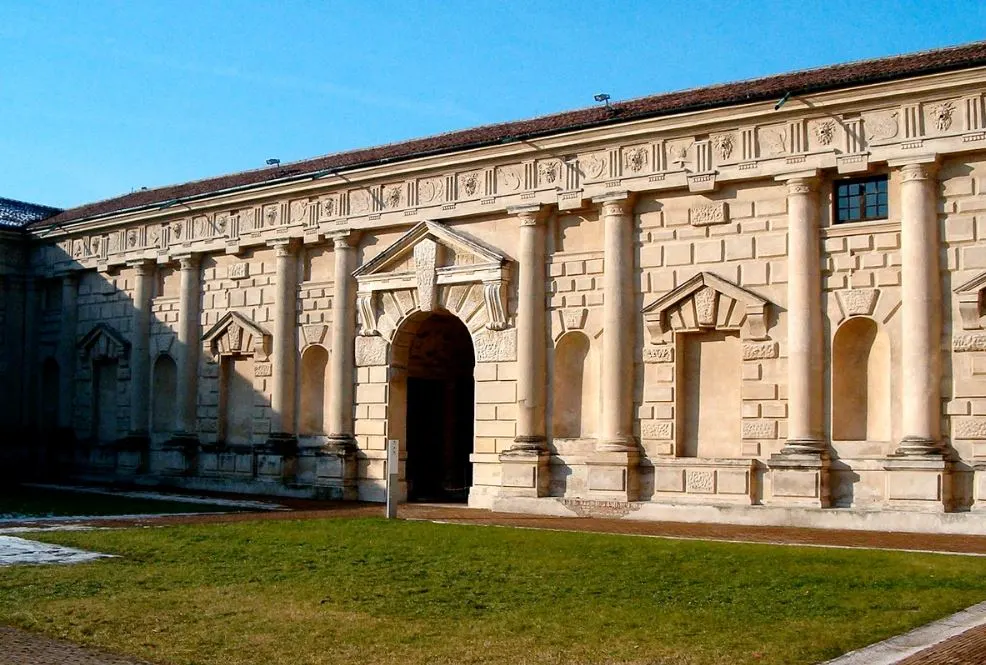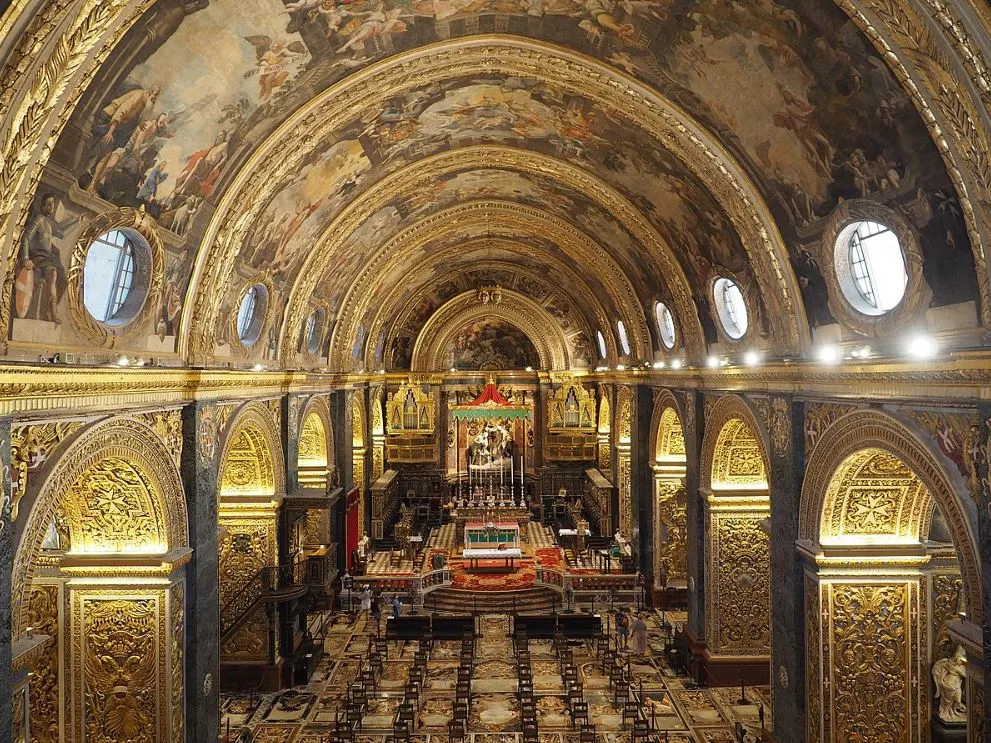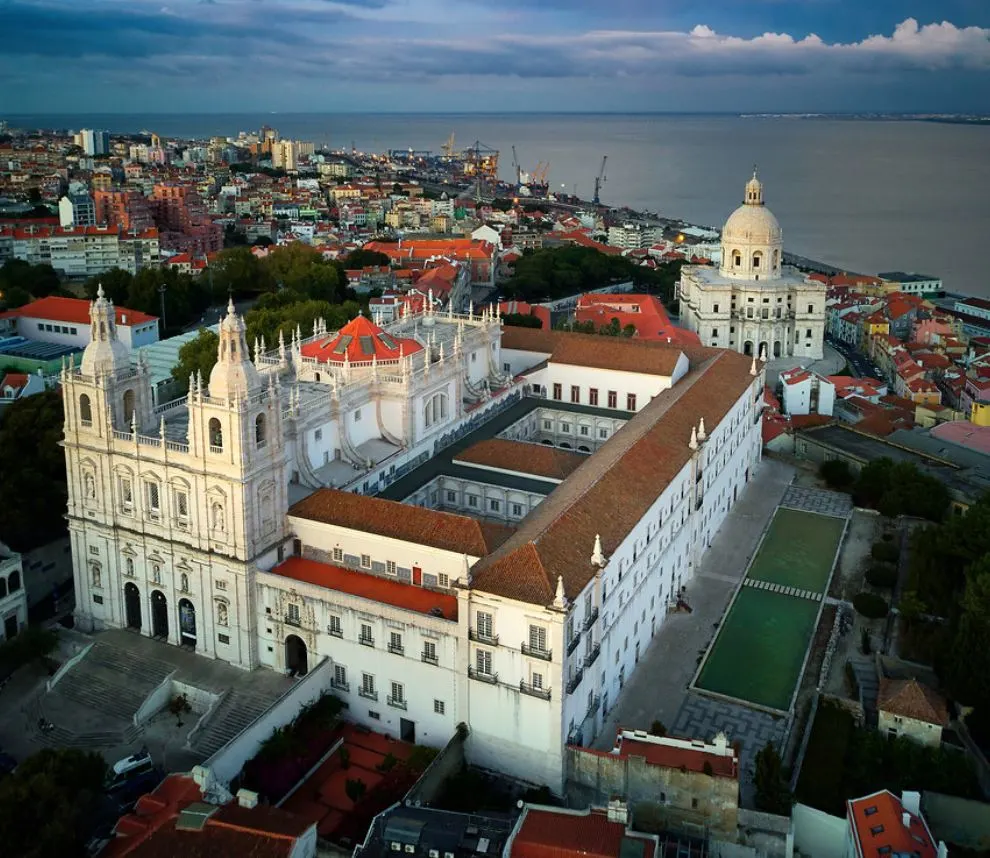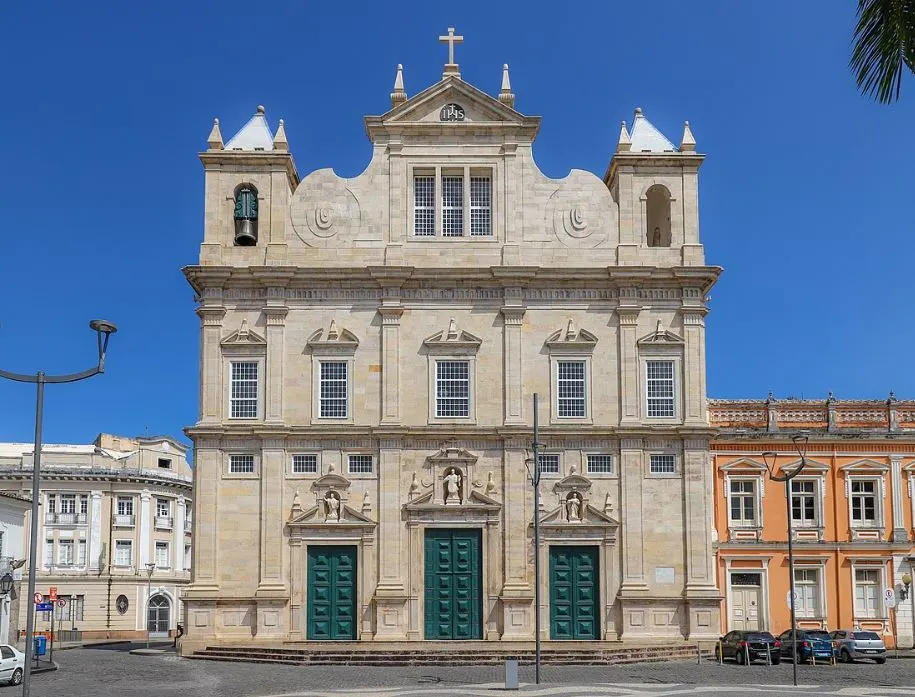Compared to various other architectural styles, Renaissance architecture of the 15th and early 16th centuries was rather dull.
The core principle during this era was to build structures that were as harmonious as possible. Therefore, symmetry and solidity were core features.
The Mannerist era emerged following the High Renaissance in the early 1520s and this was a period in which experimentation became more important.
Mannerist buildings are more imaginative and often feature unexpected elements that break the harmony that was the ultimate goal during the Renaissance.
Buildings of this type were constructed all around Europe in the 16th century. The style was eventually replaced with the decorative and theatrical Baroque style of architecture in the early 17th century.
In this article, you’ll discover some of the most famous Mannerist Buildings in history.
1. Palazzo Te – Mantova, Italy
Palazzo Te or “Palazzo del Te” is one of the best examples of Mannerist architecture, and this makes it no surprise that it was designed by one of the most renowned Mannerist architects. Giulio Romano (1499-1546) was once a pupil of Raphael (1483-1520) and expanded on his master’s learnings in the 16th century.
Constructed as a palace of leisure by the local Duke of Mantua, and consists of a square building that is adjoined by a courtyard lined with cloisters. This leads to a semicircular row of colonnades known as an “Exedra,” the most remarkable element of this building.

2. Piazza del Campidoglio – Rome, Italy
The Piazza del Campidoglio is a famous square in Rome and was designed by one other than Michelangelo, one of the most famous Renaissance artists in history. The square is lined with buildings designed by the sculptor and architect and features one of his greatest inventions.

The palaces that line this square, which features a replica of an ancient equestrian sculpture of Marcus Aurelius in its center, feature pilasters of the “giant order.” In contrast to regular pilasters, these extend on multiple floors of a building, often to the top of the façade.

3. Vleeshal – Haarlem, Netherlands
The Vleeshal in Haarlem is one of the best examples of Mannerist architecture in the northern part of Europe. The building in the Dutch city just west of Amsterdam was completed in 1603 and was used to sell meat from this year until well into the 19th century.
The stepped roofline is one of the most distinctive features of Mannerist buildings in the Low Countries. It was designed by a Ghent-born architect named Lieven de Key (1560-1627), a man who permanently put his mark on Haarlem with other buildings such as the “Waag,” the façade of the Frans Hals Museum, and part of the Haarlem Town Hall.

4. Laurentian Library – Florence, Italy
The Laurentian Library is a historic building in Florence that adjoins the large Basilica of San Lorenzo, one of the many beautiful churches in the city. It’s another building that was designed by Michelangelo, even though he already left Florence in 1534 when only the walls of the building were built.
Several other architects were involved in the completion of this Mannerist building, including Tribolo, Vasari, and Ammannati. It finally opened in 1571 and remains one of the greatest achievements of Michelangelo in terms of architecture today, especially the library’s spacious interior and vestibule.

5. St. John’s Co-Cathedral – Valletta, Malta
St. John’s Co-Cathedral is a Catholic church in Valetta, the capital city of the island of Malta, and one of the many Mannerist buildings that were constructed in the city in the late 16th century. The church was commissioned by the Order of St. John and constructed between 1571 and 1574.
The exterior of the church is rather plain but the interior features a Mannerist layout and Baroque decorations that are quite exuberant. It was designed by Maltese architect Girolamo Cassar (1520-1592), a man who designed the other Mannerist landmarks in the city as well.

6. Great Armory – Gdansk, Poland
The Great Armory is a wonderful building in Gdansk, Poland, and one of the finest examples of Polish Mannerism. The structure was constructed between 1600 and 1609 and was designed by a Flemish architect who had moved to Gdansk named Anthonis Van Obbergen.
What’s remarkable is that the building was incorporated into the western part of the medieval city walls of Gdansk. It served its purpose as an armory until the 19th century. Badly damaged during World War II, the building was restored after the war and returned to its magnificent former glory.

7. Church of São Vicente de Fora – Lisbon, Portugal
The Church of São Vicente de Fora is a church and monastery complex and can easily be described as one of the best examples of Mannerist architecture in Portugal. Located just east of the historical heart of the city, the building also houses the final resting place of the Braganza monarchs of Portugal inside the so-called Royal Pantheon.
The original monastery in this location was established in 1147 but King Philip II of Spain, who was also King Philip I of Portugal at the time, had it completely reconstructed in the late 16th century. The huge church was built between 1582 and 1629 and the monastery buildings weren’t completed until the 18th century.

8. Cathedral Basilica of Salvador – Salvador, Brazil
The Cathedral Basilica of Salvador is the main church and the seat of the Archbishop of the city of Salvador in the Brazilian state of Bahia. It’s a great example of colonial Mannerism and arguably the best example of this style of architecture in South America.
It’s hard to deny the fact that the design of this church was inspired by the Jesuit Church of Coimbra in the Portuguese city of Coimbra. Built on top of 3 former churches, the current building was constructed between 1654 and 1672. Remarkably, the “Lioz” type of stone that was used to build the church was imported from Portugal in the 17th century.

